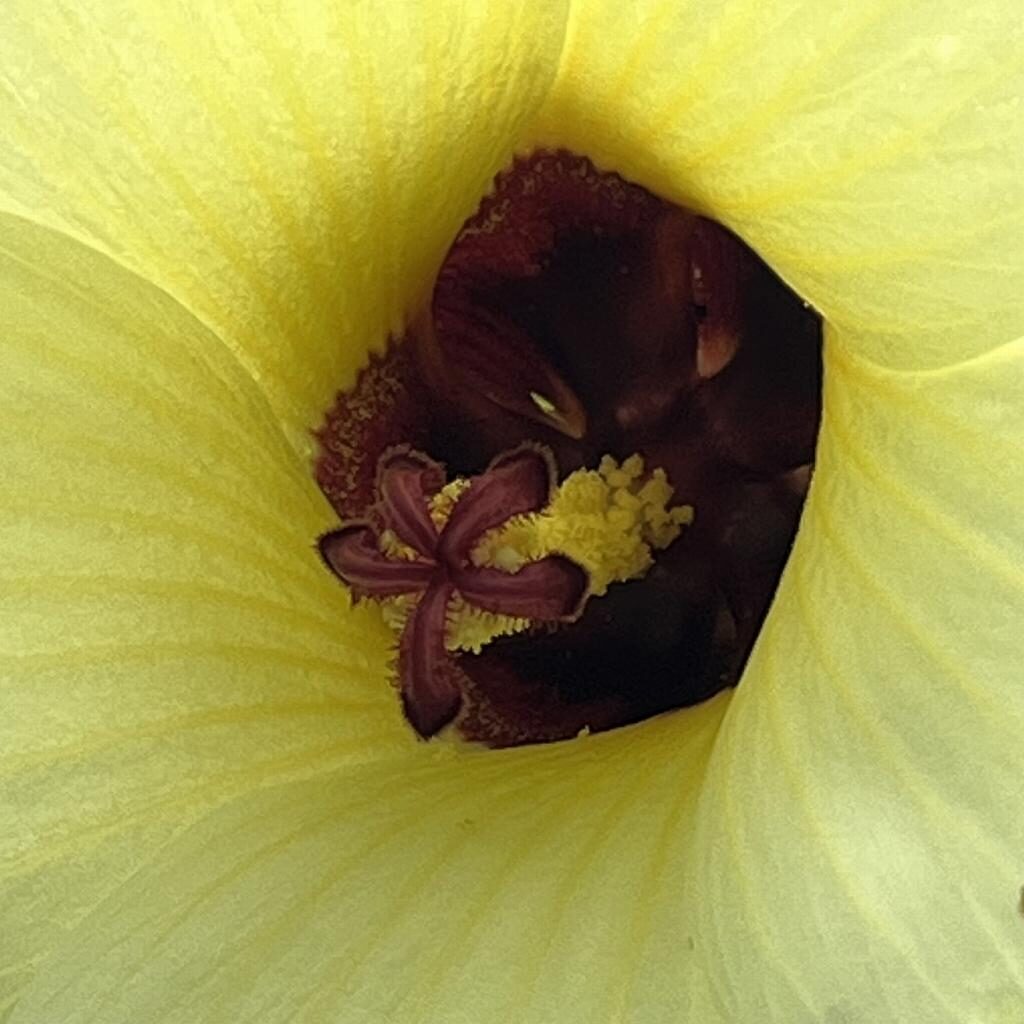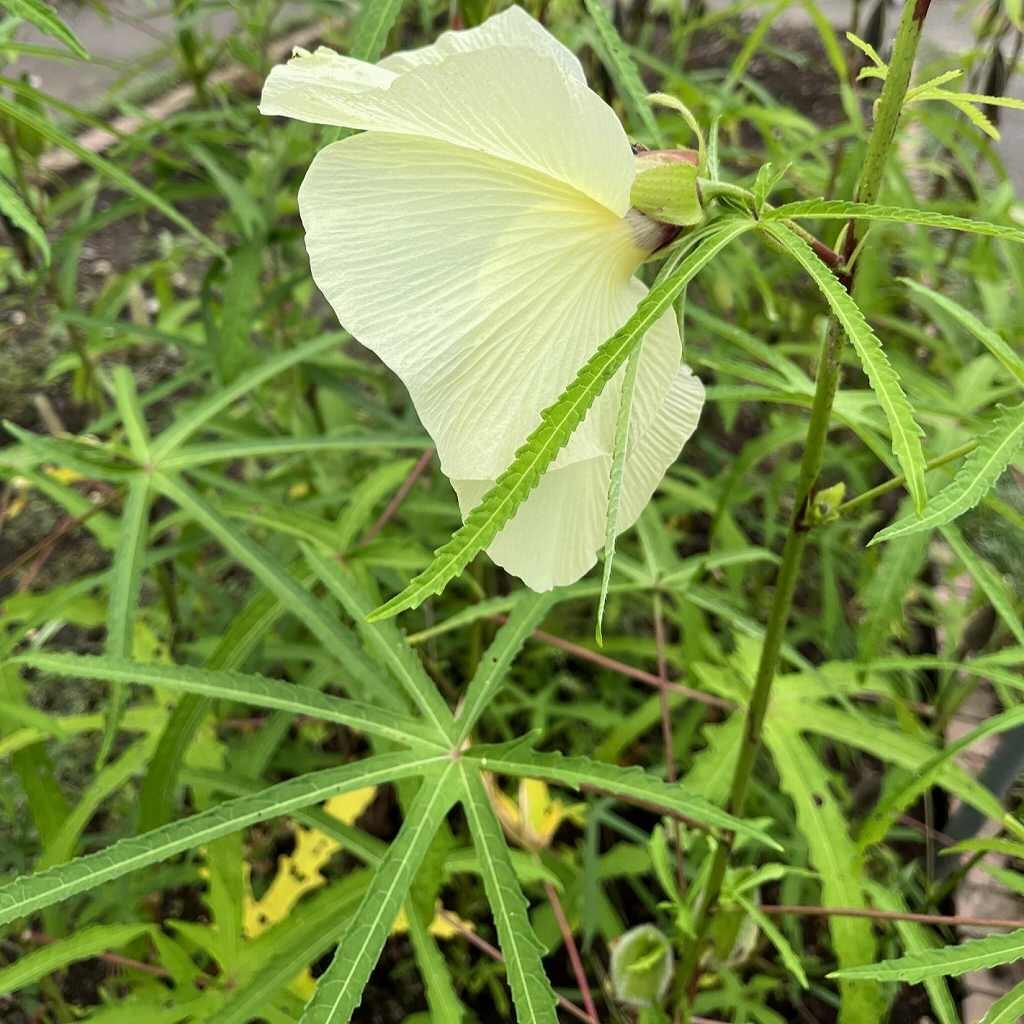トロロアオイの花は螺旋状に大きな花弁が5枚で黄白色、中心部が暗紫色の1日花。サラダや酢の物などが美味しいエディブルフラワーです。
The Aibika flower is a one-day flower with yellowish white five large spiral petals, and a dark purple center. It is an edible flower that is delicious for salads and vinegared dishes.
【仮名】トロロアオイ, ハナオクラ
【和名】黄蜀葵, 花おくら
【英名】Aibika, Sunset Hibiscus
【学名】Abelmoschus manihot
【誕生】08/ 08, 08/ 22, 08/ 24
【開花】08, 09, 10月
【花色】White, Yellow




トロロアオイ
トロロアオイの来歴
トロロアオイはアオイ科の1年草です。原産地は中国で、古くに日本へ渡来。広く温暖地で栽培され、乾燥に強い一方、多湿や忌地が苦手です。花は朝方に開いて夕方に閉じる1日花。昔から根を磨り潰した粘液が「ネリ」と呼ばれ、和紙の糊料や漢方薬の成形などに用いられました。
トロロアオイの名前
トロロアオイの名前の由来は根を磨り潰すとトロリとした粘液が生じるから。オクラのような花が咲くので「花おくら」とも呼ばれます。和名の黄蜀葵は「黄色の花を咲かせる立葵」という意味。種子に芳香があるため、ラテン語の属名アベルモスカスは「麝香の父」という意味です。
トロロアオイの姿形
トロロアオイの茎には細く硬い棘があります。葉は互生し、7つ前後に裂けて細長い掌状。花は螺旋状に大きな花弁が5枚で黄白色、中心部が暗紫色です。花後はオクラのような果実が成るものの剛毛が多く、太く短く固いので食用に不向き。熟すと褐変して割れ、種子を散らします。
トロロアオイの利用
トロロアオイの花はサラダや酢の物などが美味しいエディブルフラワー。根、葉、種子とともに生薬「黄蜀葵」として漢方にも用いられます。根は咳、炎症、排尿障害に、花や葉は腫瘤、火傷に、種子は浮腫、打撲などに。江戸時代には根が閨房の秘薬「通和散」にも用いられました。
Aibika
History of Aibika
Aibika is an annual plant belonging to the Malvaceae family. It originated in China and was brought to Japan long ago. Cultivated over a wide area in warm regions, it is resistant to dryness, but it is not good at high humidity and continuous cropping. The flowers open in the morning and close in the evening for a day. The mucilage of the ground roots has long been called “Neri”, and has been used as a paste for Japanese paper and for molding Chinese herbal medicines.
Name of Aibika
The name of “Viscous Aoi” which is Aibika in Japanese comes from the mucus produced when the roots are ground up. It is also called “Flower Okra” because it blooms like okra. Another Japanese name is “Yellow flower blooming hollyhock”. The Latin genus name Abelmoscus means “father of musk” because of the aromatic seeds.
Appearance of Aibika
The stems of Aibika have thin, hard spines. The leaves are alternate, slender and palmate with about 7 lobes. The flower has 5 large spiral petals and is yellowish white with a dark purple center. After flowering, fruits like okra are formed, but they are not suitable for eating because they have many bristles, are thick, short and hard. When ripe, it turns brown and cracks open, scattering the seeds.
Use of Aibika
The Aibika flower is an edible flower that is delicious in salads and vinegared dishes. It is also used in Chinese medicine as a herbal medicine “Yellow flower blooming hollyhock” along with its roots, leaves, and seeds. The roots are good for coughs, inflammations and dysuria, the flowers and leaves are good for tumors and burns, and the seeds are good for edema and bruises. In the Edo period, roots were also used in the secret medicine “sexual lubricant”.


